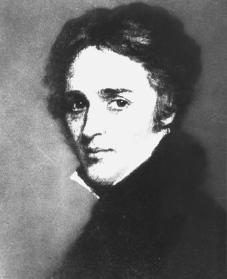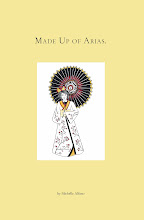No regrets, just love
We can dance until we die
You and I, we'll be young forever
"Tangled" is such an understatement for the personal and literary relations between these charismatic, irresponsible, sometimes beautiful, impossible people.
What was the Romantic movement? Very very briefly, it was an artistic and political movement which "validated strong emotion as an authentic source of the aesthetic experience". It prized "intuition and emotion over Enlightenment rationalism".
There was a time when the antics of the Romantic poets and political radicals of early 19th c. England would have sent me into a rapture of historical and intellectual envy. Lord Byron (1788-1824), Percy Bysshe Shelley (1792-1822), Mary Wollstonecraft Godwin (1797-1851), John Keats (1795-1821), Leigh Hunt (1784-1859)... Groundbreaking social and political theories, amorous, complicated adventures with multiples partners.
It is inevitable folks, once you have kids, and they become teenagers and could potentially engage in all this free lovin', free thinkin' stuff - you start to reassess the feasibility of it all, the implications and consequences, which I grant you, is much less fun than embracing all that free lovin' and free thinkin'. This is so much more than the onset of middle age and middle spread but a re-evaluation of a way of thinking for me.
The academic Daisy Hay vividly recreates the lives of the amorous and political activities of these revolutionaries of England's Romantic period. We see not only their passions and sometimes bold and adventurous designs for living in a new age but the consequences of their rule breaking mores. Hay's writing represents the best of academic writing - it is lively, informative and not larded with dense academic jargon. She captures their foibles and passions compassionately.
 |
| Percy Bysshe Shelley |
Feel like I'm living a
Teenage dream
The way you turn me on
I can't sleep
Let's run away and
Don't ever look back
Don't ever look back
With no money and nowhere to go, Shelley must resort to begging for funds, even from his wife Harriet who understandably is reluctant to supplement his newly liberated lifestyle with the two sisters. In despair, Harriet, who had been constantly beseeching him to come home, drowns herself two years later.
The threesome are so poor and so disorganized that they often travel by uncovered boat or walk great distances to achieve their destinations and eventually return to England but the girls are disowned by that other great radical thinker William Godwin (the father of Mary) who refuses to recognize the legitimacy of their unusual arrangement and take back his step-daughter Jane.
Shelley was described by an admirer as one who "dared to threaten the world with the horrid and diabolical progress of telling mankind to open its eye". Shelley attempted to persuade Mary (now pregnant with his child) to engage in a sexual relationship with Thomas Jefferson Hogg, one of Shelley's best friends with whom he co-wrote The Necessity of Atheism at Oxford University College and for which he was expelled.
 |
| Mary Shelley (nee Wollstonecraft Godwin) |
Did this suggestion from Shelley free Shelley up for further attention towards step-sister Jane (now renaming herself the more romantic name "Claire"?) or was he "merely" aggressively promulgating his notions of free love - spreading the love so to speak?
Periodically he falls in love with another muse in his circle: not only his sister-in-law Claire, but the teenage Emilia Viviani for whom he wrote Epipsychidion; and Jane Williams - the unattainable common-law wife of Edward Williams, a colleague.
Leigh Hunt, editor of The Examiner, achieved fame (or notoriety) when he was imprisoned for two years for an attack on the Prince Regent's behavior in his newspaper. He became a hero amongst the radicals and the Romantic poets of his time. Rumors of inappropriate relations dogged Leigh Hunt upon his release from prison. While married to Marianne, his sister-in-law Bess Kent came to hold a special place in his life often acting as an agent with publishers and an intimate companion at literary affairs.
The publication of The Story of Rimini, which details the "close" relations between brother-in-law Paulo and sister-in-law Francesca seemed to seal his fate and he was attacked for lightly cloaking his own alleged relationship with Bess which he vehemently denied. This forced Bess to separate from the Hunts and live in different lodgings to stifle the rumors.
 |
| Byron |
When you look at me
Just one touch
Now baby I believe
This is real
So take a chance
And don't ever look back
Don't ever look back.
Claire had followed Byron to Geneva and then Italy; the Shelleys, anxious to know Byron, followed suit. There ensued a fruitful period of literary productivity for all - most notably the third canto of Lord Byron's Childe Harold's Pilgrimage and the conception of Mary Shelley's Frankenstein.
 |
| The Funeral of Shelley by Louis Edouard Fournier (1889); pictured in the centre are, from left, Edward John Trelawny, Leigh Hunt and Byron. Mary Shelley is pictured to the extreme left of the frame, kneeling |
In a few short years the band of idealists exiled to Italy are soon wrecked by tragedy and misfortune. Mary goes on to lose three of four children before they reach the age of five. Shelley drowns in a sailing mishap with Edward Williams and Mary must struggle with Shelley's father for financial assistance and is forced to leave Italy; Byron succumbs to a fever in Greece and his death is likely hastened by doses of purgatives and laudanum by inept doctors. Leigh Hunt faces both poverty, the illness of his wife Marianne and a growing brood of unsupervised children shuffled from one city to the next in search of stability and subject to the reluctant largess of wealthier friends like Byron.
They are young, in some instance wealthy or supported by wealthy friends and they are free of the prejudices of the day. Fueled by idealism, hormones (remember Mary was sixteen and Shelley was twenty one) and radical politics, they rebelled against a hypocritical and repressive society.
 |
| Claire Clairmont |
All three women [Mary Shelley, Mary's stepsister Claire Clairmont and Bess Kent, Leigh Hunt's sister-in-law] had learned the reality of free love in the 1810s when their unorthodox living arrangements, and the ideals of Shelley and Hunt, had variously exposed their public scrutiny and, in the case of Mary and Claire, their bodies to illegitimate pregnancy...Now that the men of the group were dead, or living abroad, the women were left behind to count the cost of youthful idealism: damaged reputations, limited earning capacity and exclusion from polite society.Claire, one of the very few of the circle to reach old age was very aware of the repercussions and had spoken frequently of producing a personal memoir. She never did complete it but did record snippets of her thoughts about that time both in her diaries and in conversations she had with Edward Silsbee, a retired sea captain who venerated Shelley and which he recorded for her in notebooks (now preserved in the New York Public Library). In these peregrinations she came to believe that:
If I commit this sad tale to paper and finally to the public, it is with the intention of demonstrating from actual facts, what evil passion free love assured, what tenderness it dissolves; how it abused affections that should be the solace and balm of life, into a destroying scourge...the worshippers of free love not only preyed upon one another, but preyed equally upon their own individual selves turning their existence into a perfect hell.For unrestricted sexual conduct without responsibility is the fantasy of youth, of teenage fantasy. Coupled with great wealth (as with Byron) and/or radical political philosophy (Shelley, Leigh Hunt) there is always a price to pay and it's usually the female who pays the bill.










2 comments:
It is so interesting that every generation has to learn this for themselves. What an interesting post!
And that Katy Perry gets on my nerves!!!
Try not to forget gay men and how they perished in droves during the tidal wave of AIDS..
Removing some of the harsher consequences is a good start/end towards bringing these two book ends closer together.
Post a Comment